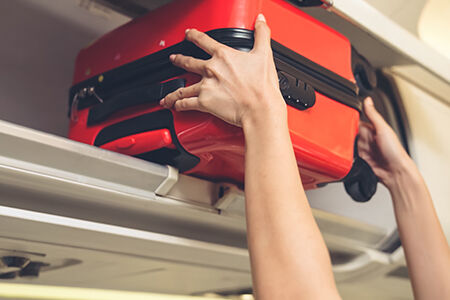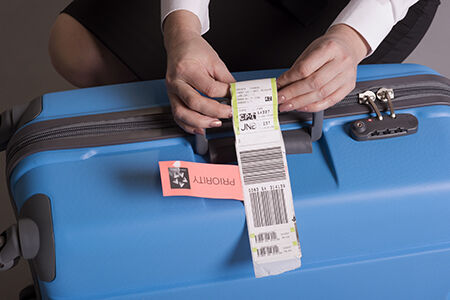Before Your Flight - Know Your Luggage
Travel

Audio By Carbonatix
In the realm of commercial air travel within the United States, understanding the distinctions between carry-on luggage, checked baggage, and personal items is crucial. Each category serves a unique purpose and comes with its own set of rules and considerations. Let’s delve into the specifics to streamline your next journey through the skies.
Carry-On Luggage

Carry-on luggage refers to the bags passengers are allowed to bring with them into the cabin of the aircraft. These items are typically stowed in overhead bins or under the seat in front of you. Here are some key characteristics of carry-on luggage:
Size Restrictions
Airlines impose specific size limits for carry-on bags to ensure they fit in the overhead compartments or beneath the seat. While dimensions may vary slightly between airlines, the standard size for carry-ons is around 22 x 14 x 9 inches.
Weight Limits
Some airlines also enforce weight restrictions for carry-on items, although this is less common within the United States. It's advisable to check with your airline for any weight limitations.
Contents
Carry-ons usually contain essential items such as clothing, electronics, medications, and other necessities for the flight. Liquids and gels carried in carry-on luggage must adhere to the TSA's 3-1-1 rule (containers no larger than 3.4 ounces, all fitting into a single quart-sized bag, with one bag per passenger).
Accessibility
Since carry-on luggage stays with you throughout the flight, it's convenient for accessing items you may need during the journey, like snacks, reading materials, or electronic devices.
Checked Luggage

Checked luggage, also known as checked baggage, refers to larger items that passengers hand over to airline staff during check-in. These bags are transported in the cargo hold of the aircraft and are typically retrieved at the destination's baggage claim area. Here's what you need to know about checked luggage:
Size and Weight Limits
Airlines have specific size and weight restrictions for checked luggage, which vary depending on the carrier and sometimes the class of service. Exceeding these limits may result in additional fees.
Security Screening
Checked bags go through a thorough security screening process, including X-ray scans and sometimes manual inspections, to ensure compliance with safety regulations.
Packing Considerations
Since checked luggage is out of your sight during the flight, it's essential to pack valuables, fragile items, and essentials for the first day in your destination in your carry-on bag.
Additional Fees
Many airlines charge fees for checked baggage, especially for additional or overweight pieces. Passengers should check their airline's policy regarding baggage fees before arriving at the airport.
Personal Items

Personal items are smaller bags or items that passengers are allowed to bring on board in addition to their carry-on luggage. These items typically include purses, laptop bags, briefcases, or small backpacks. Here's what you should know about personal items:
Size Restrictions
While personal items don't have standard size limits, they should be small enough to fit under the seat in front of you. They are meant to supplement your carry-on luggage, not replace it.
Accessibility
Personal items often contain items needed during the flight, such as laptops, tablets, passports, wallets, and other essentials. They should be easily accessible during the journey.
Security Screening
Like carry-on luggage, personal items are subject to security screening, including X-ray scans and inspections at the TSA checkpoint.
Examples
Common personal items include handbags, camera bags, diaper bags (when traveling with infants), and small backpacks. They should be practical and fit comfortably under the seat.
Conclusion
Understanding the distinctions between carry-on luggage, checked baggage, and personal items is essential for navigating the complexities of air travel within the United States. By adhering to airline regulations, packing wisely, and planning ahead, passengers can ensure a smooth and hassle-free journey from check-in to arrival. Whether you're jetting off for business or leisure, mastering the art of packing can enhance your travel experience and set the stage for unforgettable adventures.








